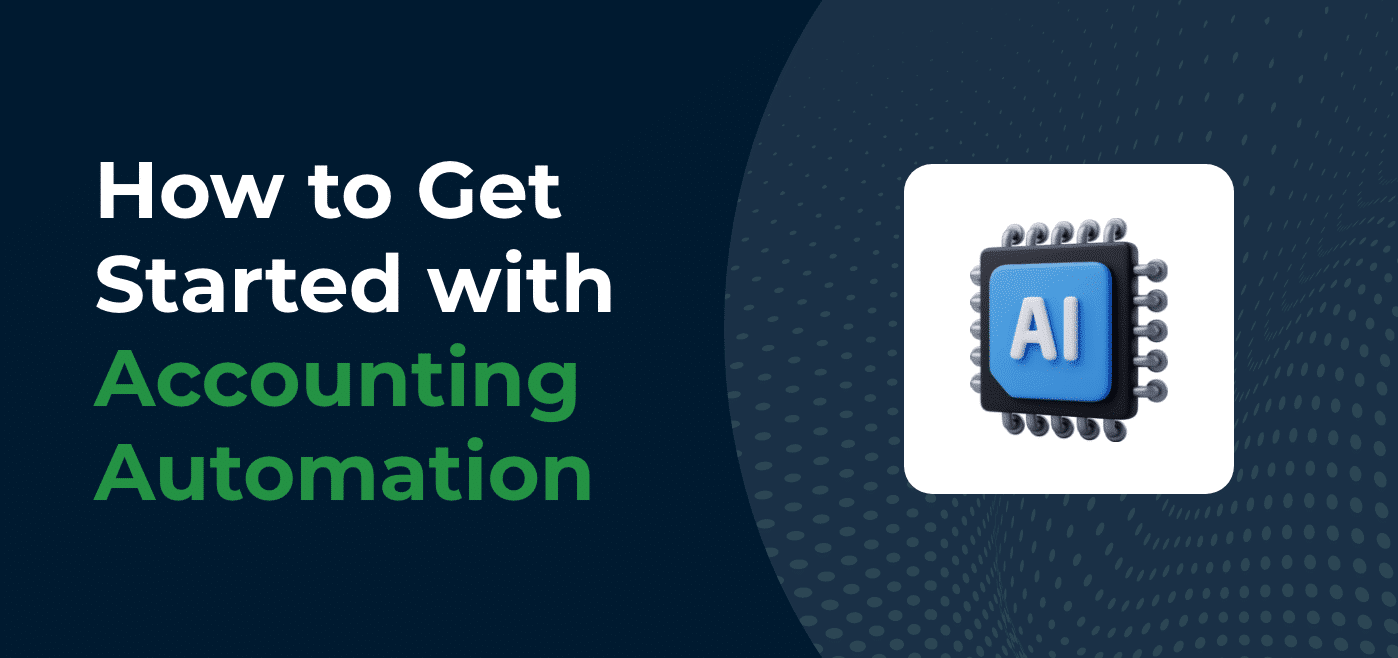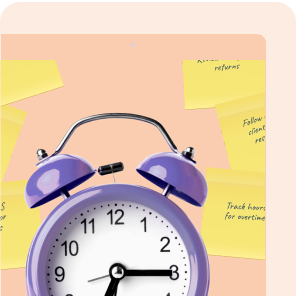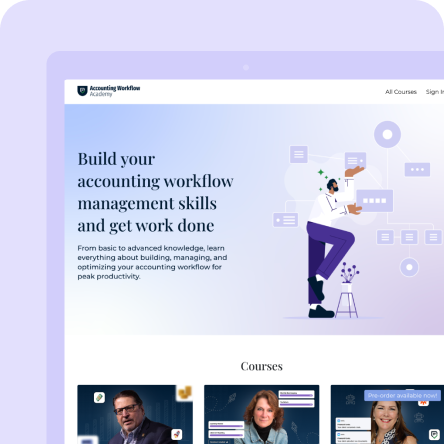Irrespective of industry or company size, accounting professionals face similar struggles in performing their daily tasks. These issues range from data entry, security, and regulatory compliance worries, among others, which accounting automation solves.
Accounting automation, also known as automated accounting, offers a comprehensive solution for firms looking to improve their internal process and focus on solving higher-level client problems. This could be consulting, risk assessment, financial reporting, and analysis. But it’s not a new concept, as it has its roots in the punch card system established in the 1960s.
Accounting automation is a present-day reality that empowers accountants to streamline processes, reduce errors, and free up valuable time for strategic thinking. As Mike Whitmire puts it in the Fintech Magazine:
Between automation’s ability to take on mundane tasks and churn out valuable data, accountants have an opportunity to be more strategic – an aspect of the job that many accountants love but don’t often get to focus on – and play a larger role in organizational operations"
So, whether you’re a seasoned accountant looking to enhance your skill set or a business owner seeking to optimize your financial operations, this guide will take you through the essential steps to get started with accounting automation.
What is Accounting Automation?
Accounting automation is the process of using software to handle manual accounting tasks in an organization. It eliminates using countless spreadsheets, paper and pen data processing, and limited storage space for accounting functions.
Accounting automation has different use cases in the accountant’s daily life, including payroll processing, ledger accounting, expense management, and many more. While beneficial, its numerous use cases have fuelled the misconception that automation will replace accountants. However, the reality is that it simply takes over mundane and repetitive accounting tasks. The result? More room to direct your brain power to more strategic duties that will help you scale your firm faster.
Benefits of Accounting Automation over Traditional Accounting
Firms stand to gain more from accounting automation over traditional accounting for the following reasons:
-
Saves time and energy
Accounting automation shortens the time and human effort needed for data entry, calculation, data transfer, and other bits, which are parts of the duties of an accountant. As mundane as these tasks may seem, the work involved can take up hours and stifle critical thinking, leaving accountants stressed at the end of the day. In small organizations, it will result in overworked and underachieving employees. In larger organizations, such manual processes can slow down workflow, which will trickle down to other departments in the firm.
-
Guarantees Security
Manual accounting methods for storing accounting data and customer information leave businesses more prone to cyber-attacks and data loss, affecting revenue margin. In comparison, computerized accounting software offers a more secure way of carrying out accounting functions. This is because it’s built on technology that can gate-keep access, provide multi-factor authentication, and offer cloud storage.
-
Boosts accuracy of tasks done:
Automated accounting guarantees accuracy and better work delivery by using formulas, tested algorithms, and checks and balances in performing accounting functions. This is different from what is obtainable in traditional accounting, where mistakes can be made and go undetected for a while during data migration or account reconciliation, thereby upsetting the accuracy of every other work that has been done.
-
Improves efficiency:
The higher accuracy, time management, and analytics from accounting software like Financial Cents help boost productivity levels for accounting professionals. Now, they get to spend more time on strategic thinking, allowing them to uncover client insights. An instance of this at work is Financial Cents, helping a CPA firm to be more efficient in its dealings with a client.
-
Encourages collaboration
The benefit of accounting automated software is not limited to accounting professionals alone. Different roles can benefit from it due to its transparent financial reporting, integration with other software like CRM, and workflow segmentation. And despite this inter-departmental collaboration, operations stay streamlined without decreasing productivity levels.
-
Provides room for remote or hybrid work setup
Accountants in a remote or hybrid work environment are better equipped for success with an automated accounting tool that allows them to communicate, keep tabs on each other’s work progress, and save important files with cloud storage.
-
Attracts more talent
Candidates are more likely to gravitate towards your organization if the working conditions come with the right tools, which is what accounting automation signals.
As the Journal of Accountancy puts it:
Investing in technologies that automate core processes and streamline user experience will be paramount to building — and retaining — a skilled and agile finance team."
Hence, the innovative culture, chances of career advancement, and efficiency brought about by a working knowledge of this tool are factors to highlight while hiring.
Improves clients’ trust in your work
As your service delivery improves due to quicker insights, more accurate results, and more secured financial assets, your client’s experience with your organization gets a positive rating. This, in turn, impacts your firm’s reputation, drawing in more clients to your business.
Access data faster
Imagine flipping through rows of files in a cabinet, trying to retrieve a document to complete a task. Now compare this to using automated software to search for documents alphabetically, based on the creation date or any other format you wish. The difference is clear: with just a few clicks and proper authorization, accounting data can be yours for use, thanks to accounting automation.
Challenges of Accounting Automation
As helpful as this concept is, there are still some grey areas experts advise you to consider with accounting automation. For instance, the software can be costly to implement, making getting buy-in from stakeholders for small and medium-sized firms a significant headache. That’s because the cost of the tool doesn’t stop at subscription; maintenance, updating the license, and getting other integrations to enjoy the full benefits of the tool contribute to its high cost.
Furthermore, as with all technological solutions, security risks are just as valid even with cloud storage. Especially since cyber attacks are getting more dynamic, and even the slightest vulnerability from your employees, a bug in the software, or an unauthorized transaction can wreak havoc. And with such sensitive information at stake, firms are advanced to beef up their cyber security before getting on board with such software.
As you’ll see in the later part of this piece, training is essential when transitioning to accounting automation. However, training may take a while as most accounting solutions have a steep learning curve. This means ramp-up time for the tool may be slow, and expensive mistakes may occur during the learning process.
Just starting your accounting firm? Check out this comprehensive guide to building your accounting firm’s tech stack.
7 Aspects of Your Accounting Processes You Should Automate
Different parts of your accounting processes will benefit from the use of an accounting automation tool, but here are the most relevant areas to focus on:
-
General Ledger Accounting
As one of the principal points of contact for all financial and accounting processes in an organization, the general ledger can be a hassle to maintain and regulate. But automation solves this problem by allowing you to set rules on where every transaction should go, recurring payments, account reconciliation, and periodic reporting. These areas help with transparency in company finances, filing taxes, and tracking revenue.
-
Payroll
Automated accounting streamlines the process of calculating employee compensation, tax deductions, and work benefits. This way, you reduce the administrative burden in prompt salary payment, there’ll be less friction between the accounting and compliance teams on tax issues, plus employees can access records of their employment benefits when the occasion calls for it.
Download our free payroll checklist template.
-
Expense management
Expenses are bound to arise when running a business, and how you handle them will reflect on the overall status of the company’s financials. With automated accounting, organizations can go beyond spreadsheets, paper receipts, and forms. Instead, they unlock a more accessible and organized method of recording all expenses from different departments.
-
Accounts Payable
Accounting automation software can simplify bill payments and sort out supplier invoices. They are compatible with invoicing software, which makes payment seamless between both parties.
Download our free accounts payable checklist template.
-
Accounts Receivable
Your firm can optimize the accounts receivable process by using accounting software to automate invoice generation, sending, tracking, and follow-up.
Download our free accounts receivable checklist template.
-
Accounting Workflow
When you set up accounting workflow automation, you’ll have insight into the status of work across your firm and have a primary source of truth for all client documents and updates.
-
Document Management
Documentation is a necessary evil in every accounting function, but it’s worse when you have to do it from scratch every single time. You can eliminate the stress accompanying it with accounting software that automatically generates documents, templatizes every process, and gatekeeps access to financial documents.
We cover in detail these 7 essential aspects of accounting firm to automate in this blog. Give it a read.
Getting Started with Accounting Automation
If you’re ready to embrace accounting automation for your firm, here are simple steps to follow to make the process stress-free and more impactful:
Step 1: Identify the current accounting processes that you perform manually
Audit your accounting department and highlight the manual tasks. Since you can’t automate every process, focus on the areas that will benefit from technological intervention.
Step 2: Search for accounting automation software that can perform manual processes
The accounting automation market is already a thriving industry, with over 500 options available, as this G2 review shows, so make a list of vendors with products that fit your specific needs based on the previous step. Such software come in different categories based on company size, cloud or desktop compatibility, and scalability. Next, evaluate the software against each other and analyze them based on their features, reviews, and best use cases.
Afterward, select the one that best meets your needs and budget. If you are short on budget, you can opt for a tool with more comprehensive features, which will be a cost-effective option for your organization. Also, take note of customer remarks on the tool’s user experience and the quality of customer support the vendor offers so that it will be easier to get down to business with the tool.
Step 3: Provide training for your team members on the selected software solutions
Since you’ll be introducing your accounting team to new technology, it makes sense to empower them first with knowledge of the tool. We advise you to do this with the customer success team of the software company.
Step 4: Create a timeline to ensure there’s a smooth transition process
Software that will handle such sensitive business for your firm should not be launched on a grand scale at the first instance. No matter how convincing the reviews are, start small within a specific timeframe to figure out the strengths and weaknesses of the tool. Over time, you can gauge its efficiency and go all out on it for your accounting needs.
Step 5: Assess the progress from time to time.
After integrating the software into other parts of your organization, monitor its performance and run periodic checks to detect any faults.
Use Financial Cents for Accounting Workflow Automation.
The easiest way to get into accounting automation is to automate your accounting workflow, which is where Financial Cent’s accounting workflow automation software comes in. Free templates are available to help you streamline your process, and onboarding your clients and team to the software is seamless. Most firms get set up in a matter of a few hours to a few days (depending on how streamlined their processes are). As respondents in our 2023 state of workflow automation shared, workflow issues were their biggest headache in 2022, but implementing Financial Cents helped them halve the hours of manual work.
Start your journey into accounting automation by automating your accounting workflow with Financial Cents.






